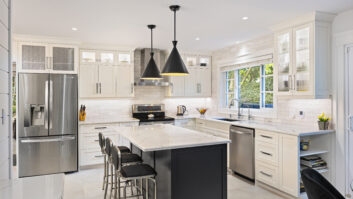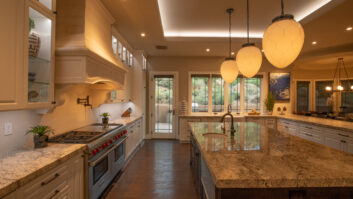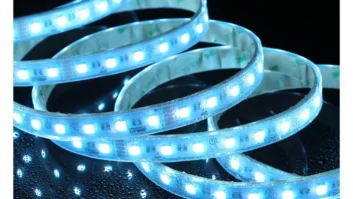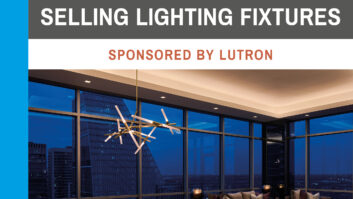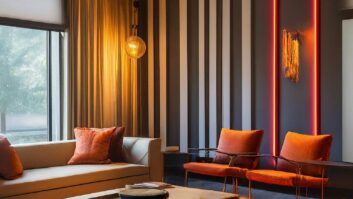With all the discussion around lighting, it may seem that it is a done deal and nearly all CI dealers are selling fixtures to complement their lighting control capabilities, but that is far from the case. One of the most vocal proponents for lighting as a category in the CI channel has been the HTSA. The buying group, led by its technology director Tom Doherty, has been championing lighting for more than five years. Still, as Doherty said in a recent interview with Residential Systems, “Today, probably 90-plus percent of all new installations have lighting control in them, but the percentage of those jobs that have dealers providing fixtures is probably less than 1 percent. One out of a hundred projects is getting the full lighting experience.”
So, there is still considerable room for growth, but dealers remain hesitant to go all in. To find out why — and what can be done to change that — we reached out to two sales professionals with a combined experience of more than 20 years selling within the CI channel — Sarah Dresher and Jason Feus — who bridge the gap between the lighting fixture manufacturers and the dealers that can benefit from a partnership.
Dresher, who began her career in Lutron’s Sales Leadership Development Program and followed it up with roles at sonnen and Coresential, recently opened her own rep firm, Luxury Integrated Technologies (LIT), which focuses on bringing design-centric technology solutions to dealers, including (and especially) lighting. [Ed. Note: Click here for a featured blog on Dresher and her plans for LIT.]
Feus is currently national connected lighting sales manager for the lighting manufacturer Liteline. Prior to that, he developed and managed the residential business for more than 14 years as an independent representative for Carolina Controls Group (CCG) and Coresential in the Southeast — where he met Dresher.
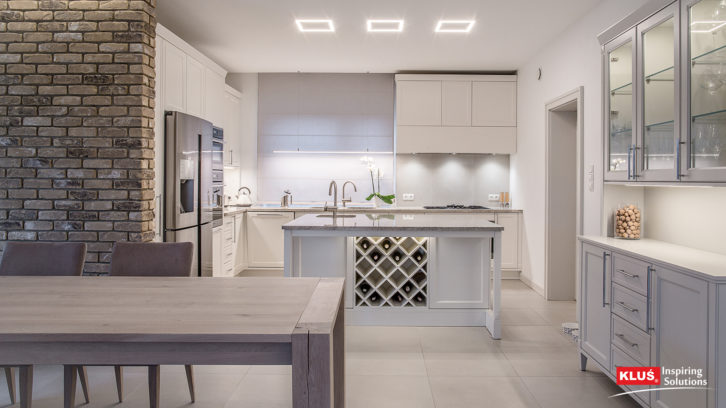
RESIDENTIAL SYSTEMS: What are the biggest barriers that custom installers face when adding lighting fixtures to their business?
SARAH DRESHER: Every business has different needs, but one of the biggest obstacles is the lack of fixture knowledge and understanding how to get started. I think dealers must find the right partners that give them the resources they need to be able to decipher what’s good, better, and best and have those solutions in their toolbelt. A lot of integrators I see are a little hesitant to get started because they just don’t know what they don’t know yet. They don’t know how to design, specify, and sell fixtures, or how it fits into their business.
JASON FEUS: I agree with Sarah. I think it’s about partnership, but it’s also the association of controls and fixtures and how do we step into this from the fixture manufacturer side and help connect the dots for the dealer and try not to force them to learn another language? I feel the path to success is fixture manufacturers morphing for dealers — being their partner and helping them without trying to teach them a whole new alphabet.
In the AV world, if you partner with a high-end manufacturer, they’re going to train you in their ways and bring you along. Does that translate to lighting manufacturers?
JASON FEUS: It does. The advantage that we have is that the integrator has now been involved in lighting control systems since the 1990s. So, the first time I sit down with a dealer, I ask them to tell me about their control strategy. Is it Control4? Lutron? Crestron? We talk about a world they already know. Then we talk about the digital solution and how it starts with the fixture on the ceiling and goes down the wall. In the past, pre-LED, it didn’t matter — when the lighting control system was speaking to an analog fixture, it always worked.
The conversation almost always gravitates to the integrator expressing apprehension about the electrician and creating conflict. Sometimes there will be conflict, but when we start discussing the “digital” aspect of fixtures and how in the past, pre-LED, it didn’t matter. Then LEDs hit the market.
The integrator will traditionally always be responsible for the control system and fixture compatibility, even if they are not supplying the LED fixtures on the project.
SARAH DRESHER: I think it’s interesting to see the dealers that have successfully implemented lighting haven’t had the obstacle of combating the electrician. They’ve either incorporated the electrician into their businesses, or they’ve partnered with one that they are confident can execute all these opportunities. They have made that obstacle non-existent to them. We all know the electrician installs the fixtures, traditionally they have supplied them as well.
The history of the fixture business has been through distribution channels and through lighting showrooms, and most fixture companies are set up to support those customers. Now, they’re going direct to custom integrators, which is great for our businesses because it allows us more engagement directly with those manufacturers to get the tools and resources that are needed to support the custom experiences we are providing. But it also creates some challenges in the market as to who is equipped to provide support through this new channel and understand the market needs.
JASON FEUS: The custom integrator likes to have a relationship with a manufacturer, where electricians may never have had to be in touch with the manufacturer outside an electrical distributor’s counter day or some type of warranty issue. Sarah, as an independent representative, and I, as a manufacturer, are supporting the many different facets of the channel. This is all part of understanding the custom integration business.
SARAH DRESHER: Over the next 18 to 24 months, you are going to see a huge influx of fixture manufacturers coming in to get a piece of the AV channel lighting opportunity and trying to morph to the custom integrator model. I saw several fixture companies that I met over at Lightfair walking the 2022 CEDIA Expo show floor in preparation for the 2023 CEDIA Expo, where they want to make a statement.
With many lighting companies coming in, the challenge is back on the integrator to try and understand if that company really knows the custom integration business. Do they have the tools and resources? What is their service? If you send in a quote, will they get it back in a day or a week? Or do they have a portal that I can access? All these questions and more are important when engaging with our channel.
JASON FEUS: Suddenly we have all these lighting manufacturers that have been told that this is the next frontier, and they need to be involved. They go out and join different buying groups and attend industry tradeshows and events. Then the first year, third year, fifth year passes, and the lighting manufacturers are wondering where is the return on investment, but they haven’t proven themselves as a partner with the custom integrator.
In the early days of AV, it was the independent representative who was the first round of tech support. The rep earned the business. That needs to happen again. If all these fixture manufacturers are jumping in the space and the independent representatives aren’t educated on fixtures and don’t understand the fixture business, then it’s going to be a long, hard road for both the custom integrator and the fixture manufacturer.
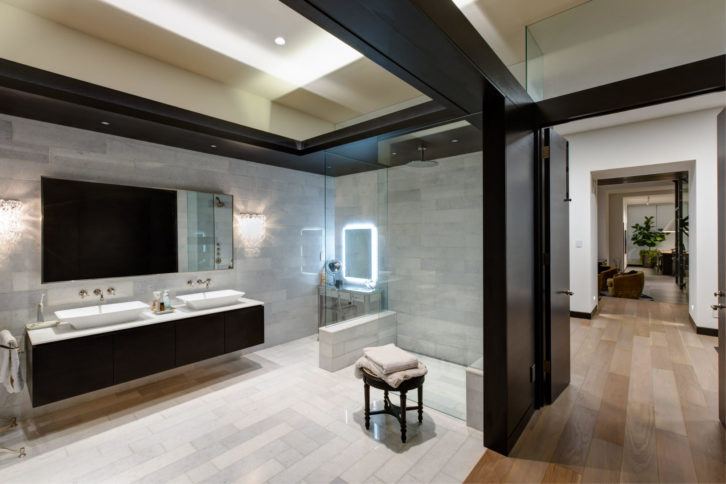
Custom installers have been doing lighting control without doing fixtures for some time without owning the whole thing. Why should that change? Why should custom installers make the move to take on the additional technology?
JASON FEUS: We touched on this earlier, but when it was digital control systems talking to analog fixtures, it was very easy, and it just worked. Then, the lighting industry moved into LEDs and we had more of a focus on how the fixtures needed to be controlled and proper expectations needed to be set — forward phase, reverse phase, 0 to 10-volt, WIFI, DMX — all different ways of controlling LEDs. There are trades that gravitate toward technology and there are trades that run away from it. We know which way custom integrators head.
SARAH DRESHER: Now is even a better time to take on fixtures. It’s also the new levels of that control that we’re incorporating. It’s no longer a static fixture, it’s a dynamic fixture. We’re talking about the tunability of white light and dim-to-warm options. These are multiple layers of control on that light. We’re also incorporating human-centric lighting, and that’s another layer of that control. So, with all these layers being incorporated, it makes sense that the fixtures fall with someone that’s going take on the control challenge.
How do we avoid the nightmare situation that Jason described earlier where the lighting manufacturers don’t understand the CI market, the sales reps don’t understand lighting, and the dealer doesn’t get the support that is needed?
SARAH DRESHER: It’s important for integrators to understand what’s already being put in homes today — the standard that’s already out there. The typical electrician uses the “four cans and a fan” in every room. That’s their go-to for budgeting, and so they know their pricing and they’re able to use that bait to fish and get the sale and move on. Electricians make more money the faster they get off the job, and integrators build a relationship with the end user and continue to service the project long after the end-user has moved into their home. The integrator should work with the electrician, but they seem to be focused on providing a better user experience and maintaining the design intent.
If you don’t already have an electrician or an electrical partner that you work with, another way to incorporate lighting is to show the homeowner the experience they can have. A lot of the lighting companies that are equipped to work with us have fantastic samples and demos that can really show the end user the full experience.
It sounds like the fixture partner is key to success for the integrator. How do you vet them and determine which are right for your business?
JASON FEUS: The CI channel has incredible storytellers — that’s what makes them good salespeople. As fixture manufacturers become a piece of the custom integrators’ story, we need to make sure the custom integrators are educated and armed properly with both lighting and fixture questions and answers.
I also feel some fixture manufacturers that are jumping into the custom integration space have never had a business conversation with integrators. They may be very good talking with the electrical distributor or lighting showroom purchase agent or the traditional distributor counter guy, but will struggle to relate to the custom integrator business, as it is very different.
SARAH DRESHER: Another way, is having an expert like myself — your local rep — walk you through those manufacturers. This is going to be invaluable during the filtering phase.
One of the exercises I enjoy the most with custom integrators just getting started in fixtures is walking them through specification sheets and showing them the amount of non-specific or misleading information from the manufacturer.
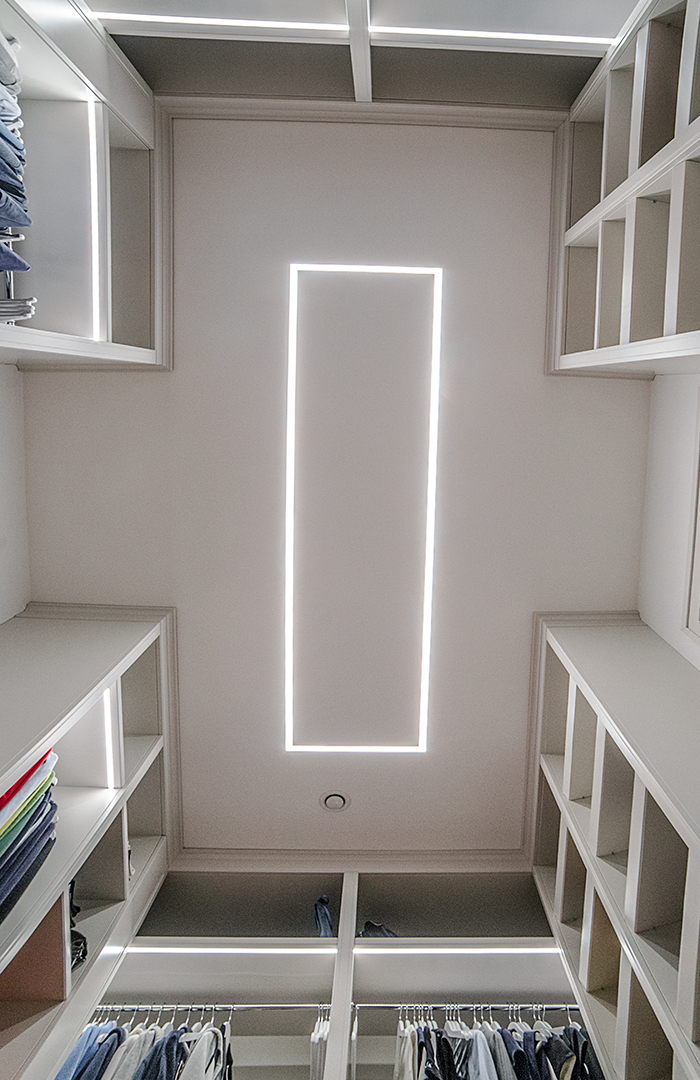
Let’s assume you partner with electrician or bring one on staff and start working with the right manufacturer. When should you start seeing positive results? What is realistic in terms of how this category would grow in a business?
SARAH DRESHER: You never know what you’re going to run into on the job, but as you start to form a business process and how you’re going to roll it out as part of your model, it turns around very quickly. I found my most successful integrators with lighting are spending more time talking lighting to their clients — and ultimately winning the other technologies in the home as a result.
JASON FEUS: It always feels like the largest job the custom integrator does is their first job. It’s just natural to “cut their teeth” on a big project. When I started selling fixtures to the CI channel in 2010, I would talk about lower margin to the dealer, and they weren’t really interested because products in their traditional channel had more margin. They were making good money on products they sold.
Then custom integrators started to learn that they will be the trade responsible for the lighting issues, even if their lighting control system and fixtures — supplied by other trades — were not compatible or had dimming issues. Now that fixtures are more inline with other AV product margins, the dealers understand that they are responsible for compatibility with their lighting control systems. With the right fixture manufacturer partner, you will make money on your first job and should be very profitable on your second.
Is lighting appropriate for every CI business?
JASON FEUS: I say yes — after all, every home has lights. It really comes down to where we want to engage and working with partners that have a solution for not only the high-impact areas, but also the essential areas.
SARAH DRESHER: I completely agree. There’s every level — starting with the guy that’s just doing lights for the home theater. That is another approach for a dealer that’s just doing home theaters — they’re getting that first engagement with the lighting side and providing those fixtures for that one specific space.
I do think at every level there will be some engagement with lighting, and whether it’s $1 million or $100,000 or $35,000, it’s going to be at least setting a target, giving people a goal to work toward, and understanding that, if I’m working with the right manufacturer partner, I have solutions to provide throughout the home.
I like the fact that Liteline, or “Jason’s line,” has very affordable entry-level price points, but also fixtures for the high-end architectural/specification markets. That breadth of offering allows me to communicate to integrators the different solutions, so we can meet the needs and budget of the project.
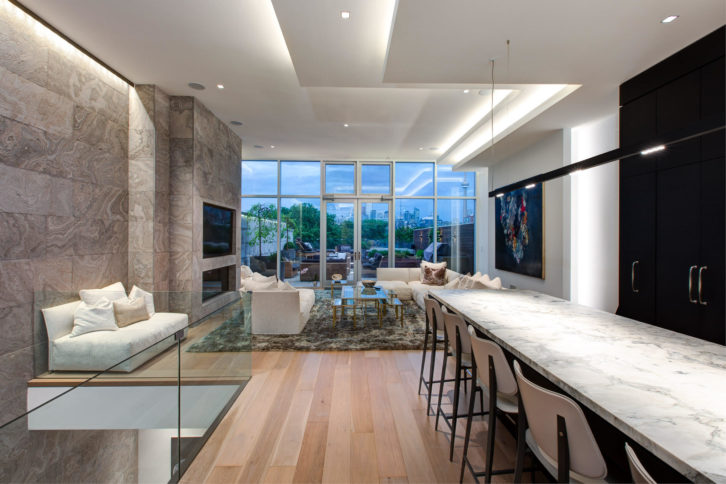
How many years do you think it will take lighting fixtures to be seen as being just a part of the business — like lighting control systems are now?
JASON FEUS: I think in five years we’ll see widespread adoption. Right now, we’re past the bleeding-edgers — those businesses that engage in fixture technology and are the first to jump on board. They got engaged early and are putting up some big numbers now. I think we still have work to do, but the category is maturing very quickly.
SARAH DRESHER: I think we’re pushing the string uphill still. As I mentioned, we’ve got at least a good 18 to 24 months of ramping up manufacturers to the custom integrator model and integrators adopting fixtures. I do, however, agree with Jason’s timing — especially with engagement. With the timing of the manufacturers coming into the space in 2023, in 2024 you’re going to double the number of dealers selling lighting fixtures.
I like that the buying groups are taking lighting fixtures on, but I think fixture manufacturers need to partner with HTA or CEDIA organizations to create synergy between the integrator and the fixture manufacturers.
This will be one way to draw more attention to the category, and if these organizations get behind it, it’ll really help integrators adopt the technology.
You have shown that, with the right partnerships, lighting can become a strong part of a CI business, but when you think about all that can be done with lighting — including wall painting and wellness — it still seems like a huge mountain to climb.
JASON FEUS: The partnerships make it easier to overcome the obstacles. This channel, more than any other, is relationship-driven. To me, those relationships are what will make fixtures a very profitable part of the custom integrator channel. The right partner who is willing to assist and educate with layering architectural light and proper fixture placement will excel in this space. Everything else is just figuring out where and when and how; it’s knowing the resources and that the dealer can call Sarah or myself and we can assist.
Lighting Fixture Meet & Greet
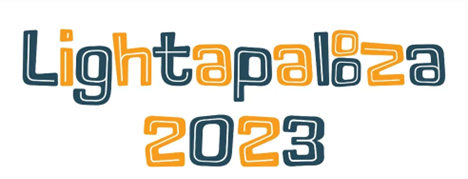
In the main story, both Sarah Dresher and Jason Feus recommend doing research on lighting fixture manufacturers to make sure they can provide the service your company needs. Lightapalooza, the lighting-centric tradeshow specifically for the custom installation channel, offers an opportunity to meet many companies in one place. You can meet both Dresher and Feus there. Hosted by HTSA and taking place February 20-23, 2023, at the Renaissance Phoenix Glendale Hotel & Spa, Lightapalooza 2023 has secured the following exhibitors, with more expected to be added:
- Apex Technologies
- Apure
- Coastal Source
- Colorbeam Lighting
- Control4
- Crestron Electronics
- DMF Lighting
- Draper
- Ecosense/Soraa
- Elemental LED
- Innerscene
- Legrand
- Light Can Help You
- Liteline
- Lucifer Lighting
- LuminiiHOM
- Lutron Electronics
- Modular Lighting Instruments
- MP Lighting
- Proluxe
- Screen Innovations
- seeLess
- Vantage Lighting
- Visual Comfort (Tech Lighting)
- Wang Alliance Corporation/ AiSPIRE
The event is open to all custom installation professionals. Find out more information and register to attend by visiting http://www.lightapalooza2023.com.
